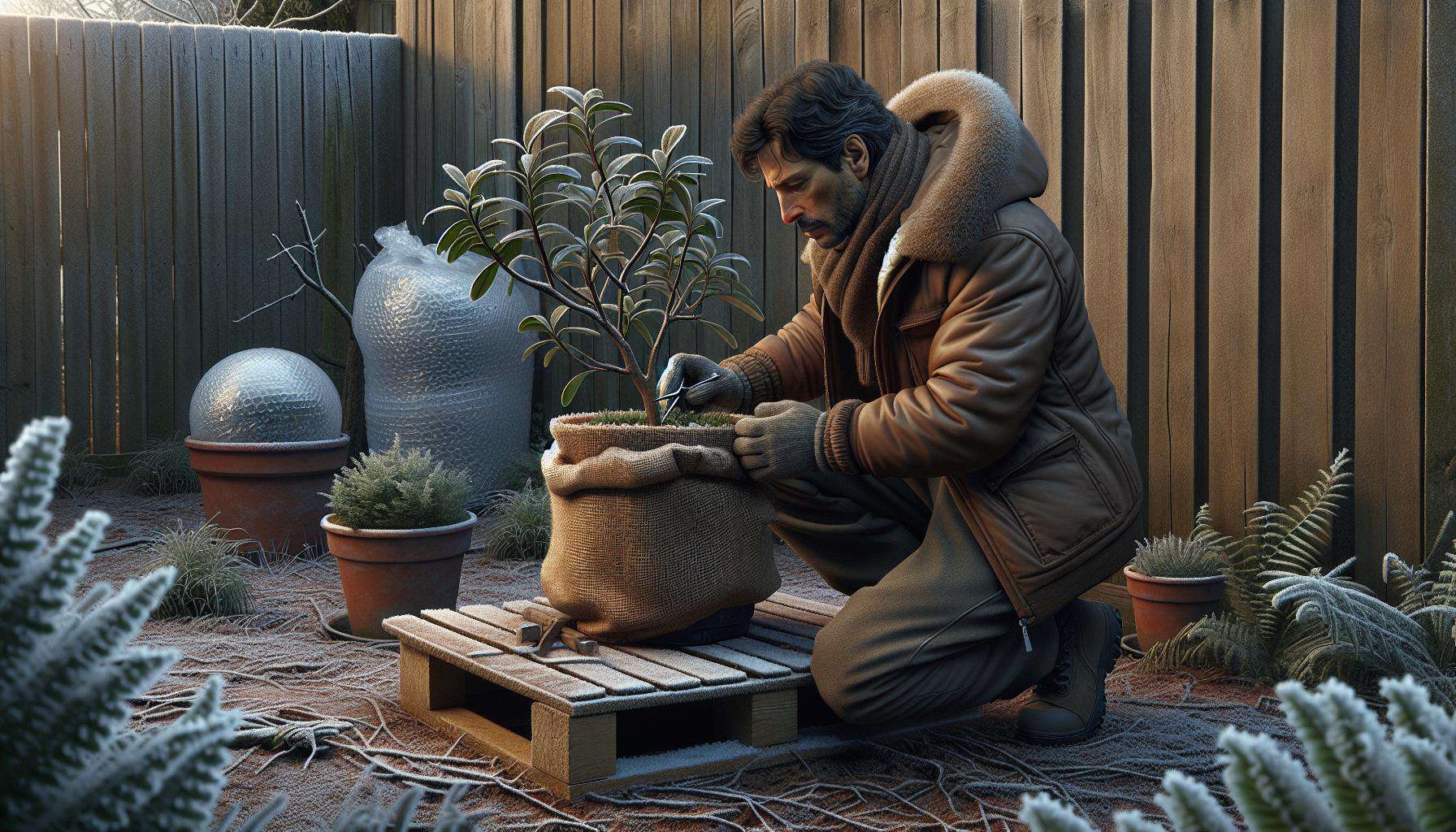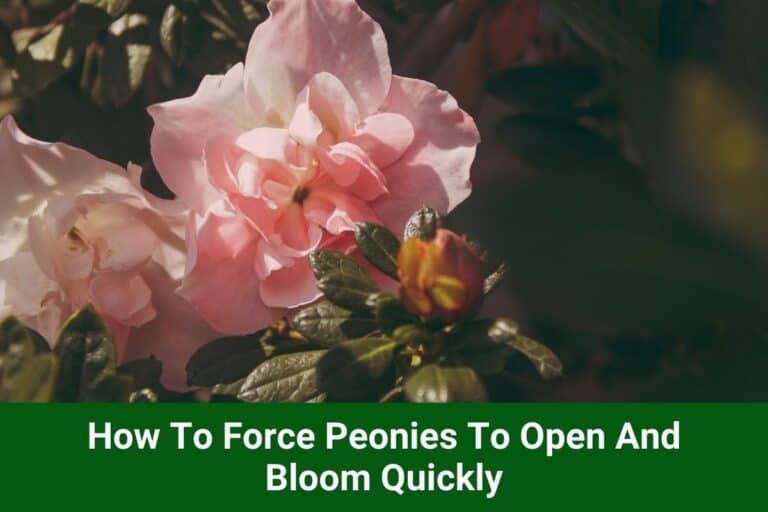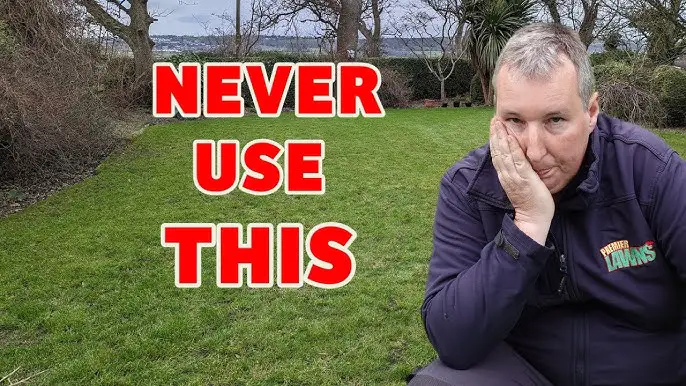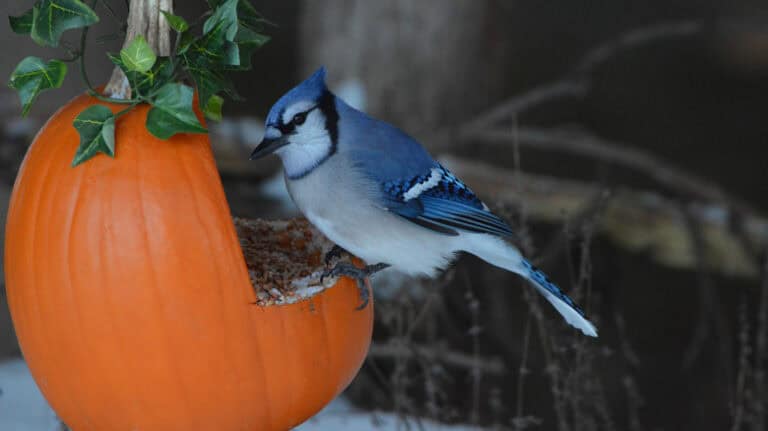How to Overwinter Perennial Plants in Pots Containers: Expert Tips for Winter Survival
Winter’s chill can be a death sentence for perennial plants in pots if you don’t take the right steps to protect them. I’ve learned the hard way that simply leaving them outside isn’t enough. Whether you’re dealing with harsh frosts or milder winters, overwintering your potted perennials is crucial to ensure they thrive year after year.
In this guide, I’ll walk you through the best methods to keep your plants safe during the colder months. From choosing the right containers to providing adequate insulation, these tips will help you maintain a healthy garden even when the temperature drops. Let’s jump into the essentials of overwintering perennial plants in pots and containers.
Understanding Overwintering
Overwintering refers to techniques used to protect perennial plants in pots during the cold winter months. This process ensures plants survive and thrive when temperatures rise again. In pots, plants face harsher conditions than in the ground, so special care is necessary.
Many common perennial plants (hostas, lavender, and daylilies) can endure mild winters with minimal intervention. Their root systems are somewhat insulated by the soil. But, in places where temperatures drop below freezing, extra precautions are vital.
The Role of Insulation
Insulation helps regulate the temperature around the plant roots. I use materials like straw, leaves, or mulch to cover the soil in my pots. This layer traps warmth and keeps the roots safe from frost damage. For pots on the smaller side, clustering them together adds an extra protection layer.
Container Choice Matters
The choice of container plays a significant role in overwintering. Select containers crafted from materials that provide better insulation, such as wood or thick plastic. Terracotta pots, while attractive, can crack in freezing temperatures due to moisture expansion. Using larger containers benefits plants as they hold more soil, offering better insulation to the root system.
Position and Shelter
Positioning the pots close to walls and under eaves offers natural shelter. In extreme climates, moving the pots into unheated garages or basements can create a more stable environment. My pots fare best on the southern side of my house, where they receive the most winter sunlight.
Watering Adjustments
While overwintering, reduce watering frequency. The soil needs to be moist but not waterlogged. Over-watering can cause roots to rot in cold conditions. Checking soil moisture levels every couple of weeks helps maintain the right balance.
Overwintering perennial plants in pots involves simple strategies that ensure their survival through winter, ready to burst into life once spring arrives.
Choosing the Right Perennial Plants
Selecting the right perennial plants is critical for successful overwintering in pots. I’ll cover the types of plants suitable for cold weather and those that need extra care.
Cold-Hardy Perennials
Opt for cold-hardy perennials if you live in regions with harsh winters. These plants can withstand low temperatures and survive through winter months. Examples include:
- Hostas: These shade-tolerant plants can endure USDA hardiness zones 3-9.
- Daylilies: Thriving in zones 3-9, daylilies are robust and low-maintenance.
- Sedum: Known as stonecrop, this plant flourishes in zones 3-9.
- Heuchera: Also called coral bells, it grows well in zones 4-9.
- Astilbe: Perfect for zones 4-8, astilbe loves moist, shaded areas.
Cold-hardy perennials can effectively handle frost and need minimal protective measures. Ensure roots are insulated using mulch to further safeguard against deep freezes.
Non-Hardy Perennials
Non-hardy perennials require extra care and may not survive severe winter conditions without intervention. These plants include:
- Geraniums: Often grown as annuals in zones 9-11 but can be overwintered indoors.
- Cannas: Preferring zones 7-10, cannas need lifting or indoor relocation.
- Dahlias: Suitable for zones 8-10, dahlias must be dug up and stored.
- Begonias: Ideal for zones 9-11 and should be moved inside or stored.
- Fuchsias: Grows well in zones 8-10 but needs indoor protection.
For non-hardy perennials, consider relocating pots to sheltered areas or bringing them indoors. Alternatively, use insulating materials like bubble wrap or burlap to cover the containers.
Understanding the specific needs of perennial plants ensures they thrive even in challenging climates.
Preparing Pots and Containers

To successfully overwinter perennial plants in pots and containers, proper preparation is key. This involves selecting suitable materials and maintaining optimal drainage.
Best Pot Materials for Winter
Selecting the right pot material is crucial for protecting perennial plants during winter. Terracotta pots, while attractive, can crack in freezing temperatures. I recommend using materials like plastic, fiberglass, or wood, which are more resistant to frost. Fabric pots also provide flexibility and insulation benefits. For example, plastic pots are lightweight and resist cracking, while fiberglass pots offer durability and insulation. Wooden containers offer a natural look and insulate well, making them a stylish and functional choice.
Ensuring Proper Drainage
Proper drainage prevents waterlogging and root rot, which can be fatal during the cold months. Ensure pots and containers have drainage holes at the bottom. Consider using a porous potting mix to help drainage; a blend containing perlite or sand works effectively. Elevate pots slightly off the ground using pot feet or bricks; this allows excess water to drain and prevents pots from sitting in water. If drainage holes are insufficient, drill additional holes to improve water flow and keep the roots healthy.
Essential Steps for Overwintering
Overwintering perennial plants in pots requires careful attention to ensure their survival through harsh winter conditions. Follow these essential steps to protect your plants effectively.
Pruning and Trimming
Prune perennial plants before frost to remove dead or diseased growth. This helps reduce the risk of pests and diseases in winter. Trim stems and foliage to promote healthy regrowth in spring. Cut back about one-third of the plant’s height to prevent snow damage. If possible, prune on a dry day to lower disease transmission risk. Clean and disinfect pruning tools after each use to maintain plant health. Mulch soil after trimming to safeguard roots from freezing temperatures and retain moisture.
Proper Watering Techniques
Water perennials thoroughly before the first frost to ensure they’re well-hydrated. Reduce watering frequency as temperatures drop since overwatering can cause root rot. Only water when the top inch of soil feels dry, and avoid wetting foliage to prevent fungal issues. Use lukewarm water on particularly cold days to minimize shock. Check soil moisture levels periodically during winter. Use a moisture meter for accuracy. Ensure pots have drainage holes to prevent waterlogging.
Insulating Containers
Insulate pots to protect plants’ roots from freezing. Wrap containers with insulating materials like burlap, bubble wrap, or horticultural fleece. Elevate pots on wooden planks or bricks to avoid contact with cold ground and improve drainage. Group pots together to create a microclimate that retains heat. Place containers in a sheltered location, such as against a wall or inside an unheated garage. Add extra insulation by using straw or shredded leaves around the base of the pots. Secure insulation with twine or bungee cords to keep it in place during strong winds.
Indoor vs Outdoor Storage
Benefits of Indoor Storage
Indoor storage for overwintering perennial plants in pots offers multiple advantages. First, it provides a stable temperature, protecting plants from freezing. For example, placing pots in a basement or an unheated sunroom helps avoid extreme cold.
Second, indoor environments reduce exposure to harsh weather conditions like wind and frost. This minimizes physical damage to the plants’ foliage and stems. Also, it allows better control of moisture levels. Overwatering is less likely indoors, and humidity can be regulated more effectively.
Third, indoor storage helps prevent pests and diseases. By placing pots on shelves or elevated surfaces, plants are less accessible to ground-dwelling pests. Also, keeping an eye on conditions allows for quicker interventions if issues arise.
Outdoor Storage Tips
Effective outdoor storage involves several key practices to protect perennial plants from winter damage. First, choose a sheltered spot, such as near a building or fence, to reduce exposure to wind and temperature fluctuations.
Second, insulate the pots. Surround them with materials like straw, mulch, or even old blankets. Wrapping containers in burlap or bubble wrap adds another layer of protection against extreme temperatures.
Third, elevate containers to improve drainage and prevent root rot. Place them on bricks or wooden pallets. Grouping pots together creates a microclimate, which helps maintain a more consistent temperature around the plants.
Finally, monitor the watering needs of outdoor-stored plants. Ensure they’re not too dry but avoid waterlogging. During cold snaps, use lukewarm water to gently thaw frozen soil. These steps increase the likelihood of your perennials surviving the winter unscathed.
Common Issues and How to Solve Them
Ensuring perennial plants survive winter in pots is challenging. Understanding common issues and solutions helps ensure success.
Pest Control
Pests can harm overwintering perennials, leading to weakening or death. Aphids, spider mites, and slugs are common culprits.
- Aphids: These tiny insects suck sap from leaves and stems. Use insecticidal soap or neem oil to control aphids.
- Spider Mites: These pests cause yellowing leaves and webbing. Mitigate infestations with regular misting and applying miticide.
- Slugs: Slugs eat leaves and stems, creating holes. Place copper tape around pots and use slug bait to deter them.
Regularly inspect plants for pests. Address issues promptly to prevent damage.
Managing Frost Damage
Frost can severely damage or kill perennial plants in pots. Taking preventive measures reduces risks.
- Insulate Pots: Use materials like burlap and bubble wrap to insulate pots. This added layer helps shield roots from freezing.
- Elevate Pots: Elevate containers to improve drainage. This prevents waterlogging, which exacerbates frost damage.
- Strategic Placement: Position pots in sheltered areas near walls or fences. These spots provide some protection from harsh winds.
If frost is expected, cover plants with frost cloth or old blankets. Ensure coverings extend to the ground, trapping warmth.
By addressing common pests and managing frost damage effectively, perennial plants in pots can thrive through winter.
Conclusion
Successfully overwintering perennial plants in pots requires a blend of strategic planning and attentive care. By focusing on insulation, proper container choice, and adjusting watering practices, you can ensure your plants survive the harsh winter months. Pruning before frost and using materials like burlap and bubble wrap for insulation are essential steps. Elevating and grouping pots can create a beneficial microclimate, while strategic placement in sheltered spots offers additional protection.
Indoor storage provides a stable environment, reducing exposure to extreme weather and pests. Outdoor storage demands careful monitoring and the use of insulating materials like straw and mulch. Regular inspections for pests and frost damage, along with proactive measures like using insecticidal soap and frost cloths, are crucial. With these techniques, your perennial plants will not only survive the winter but also thrive in the seasons to come.
Frequently Asked Questions
What are the key steps for overwintering perennial plants in pots?
To overwinter perennial plants in pots, start by pruning and trimming before frost. Ensure proper watering to prevent root rot, insulate containers with burlap or bubble wrap, elevate pots for drainage, and strategically place them in sheltered locations. Grouping pots can also help create a microclimate.
How can I insulate my potted plants for winter?
To insulate potted plants, use materials like burlap, bubble wrap, straw, or mulch. Wrap the containers for added insulation, or group the pots together and add extra layers around them to create a more stable temperature environment.
Why should I elevate pots during winter?
Elevating pots improves drainage and prevents water from pooling at the base, which can freeze and damage roots. Use pot feet, bricks, or cinder blocks to raise the pots off the ground slightly.
What are the benefits of storing potted plants indoors during winter?
Indoor storage provides stable temperatures, protection from freezing, reduced exposure to harsh weather, better moisture control, and prevention of pests and diseases.
How do I prevent root rot in potted plants during winter?
Prevent root rot by adjusting the watering frequency. Water less often during winter, ensuring the soil is moist but not waterlogged. Check the drainage to avoid standing water in the pots.
What should I do if my potted plants get aphids or spider mites in winter?
For aphids, use insecticidal soap or neem oil. For spider mites, mist the plants regularly and apply miticide if necessary. Regularly inspect your plants for pests and take immediate action if problems arise.
How can I manage frost damage to my potted plants?
Prevent frost damage by wrapping pots in burlap or bubble wrap and placing them in sheltered areas near walls or fences. You can also use frost cloths or blankets to cover plants when frost is expected.
Is it necessary to group potted plants together in winter?
Yes, grouping potted plants together helps create a microclimate. This grouping offers better insulation and protection from the wind and cold, helping the plants better withstand winter conditions.
Can I use lukewarm water to help my plants during cold days?
Yes, using lukewarm water on cold days can help thaw the soil and give the plants a better chance of absorbing the needed moisture. However, avoid using hot water as it can damage plant roots.
What’s the importance of regular inspection for pests during winter?
Regular inspections help you identify and treat pest issues early. Early intervention prevents infestations from spreading and causing severe damage to your plants during the vulnerable winter months.







